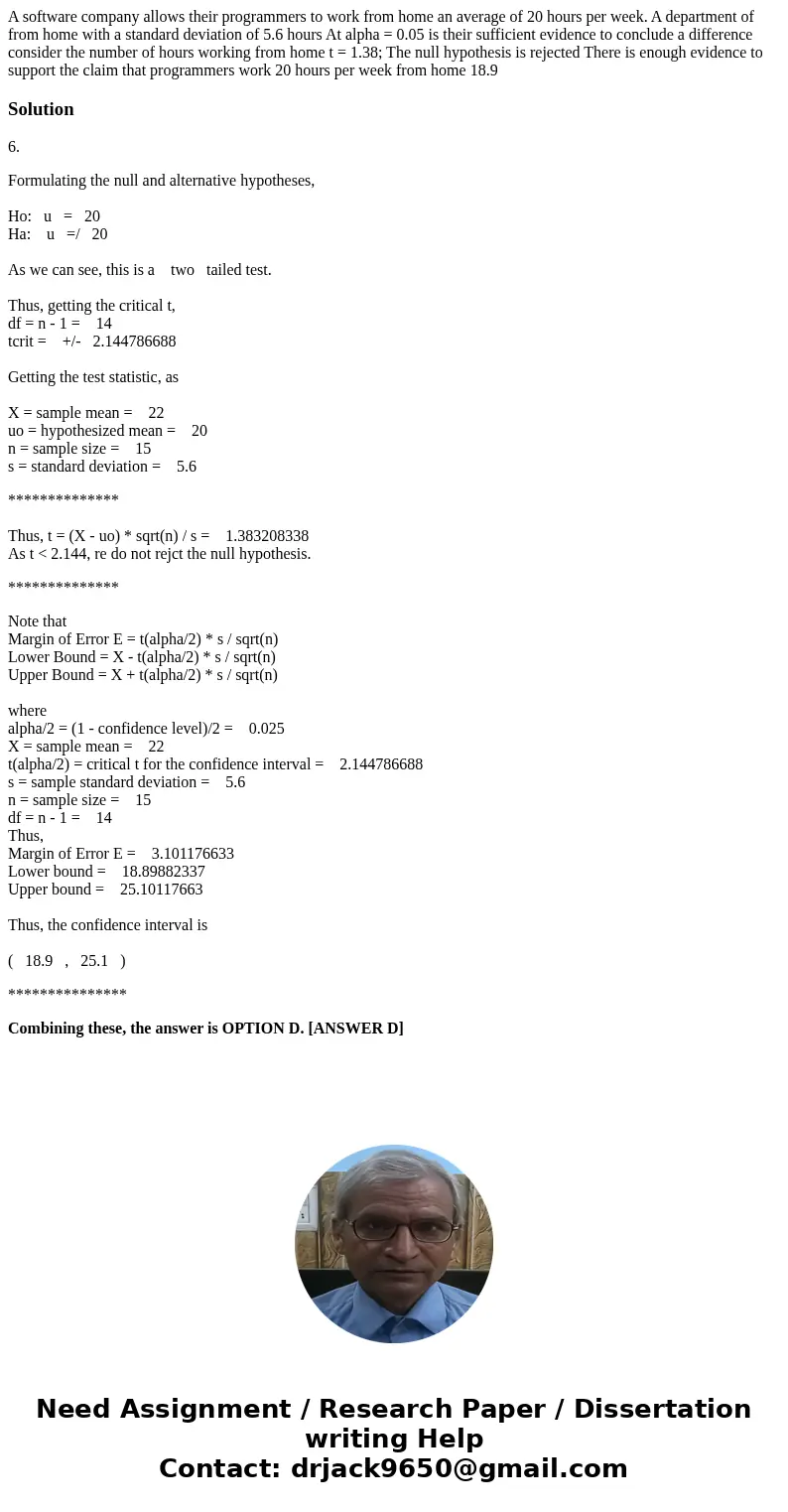A software company allows their programmers to work from hom
Solution
6.
Formulating the null and alternative hypotheses,
Ho: u = 20
Ha: u =/ 20
As we can see, this is a two tailed test.
Thus, getting the critical t,
df = n - 1 = 14
tcrit = +/- 2.144786688
Getting the test statistic, as
X = sample mean = 22
uo = hypothesized mean = 20
n = sample size = 15
s = standard deviation = 5.6
**************
Thus, t = (X - uo) * sqrt(n) / s = 1.383208338
As t < 2.144, re do not rejct the null hypothesis.
**************
Note that
Margin of Error E = t(alpha/2) * s / sqrt(n)
Lower Bound = X - t(alpha/2) * s / sqrt(n)
Upper Bound = X + t(alpha/2) * s / sqrt(n)
where
alpha/2 = (1 - confidence level)/2 = 0.025
X = sample mean = 22
t(alpha/2) = critical t for the confidence interval = 2.144786688
s = sample standard deviation = 5.6
n = sample size = 15
df = n - 1 = 14
Thus,
Margin of Error E = 3.101176633
Lower bound = 18.89882337
Upper bound = 25.10117663
Thus, the confidence interval is
( 18.9 , 25.1 )
***************
Combining these, the answer is OPTION D. [ANSWER D]

 Homework Sourse
Homework Sourse